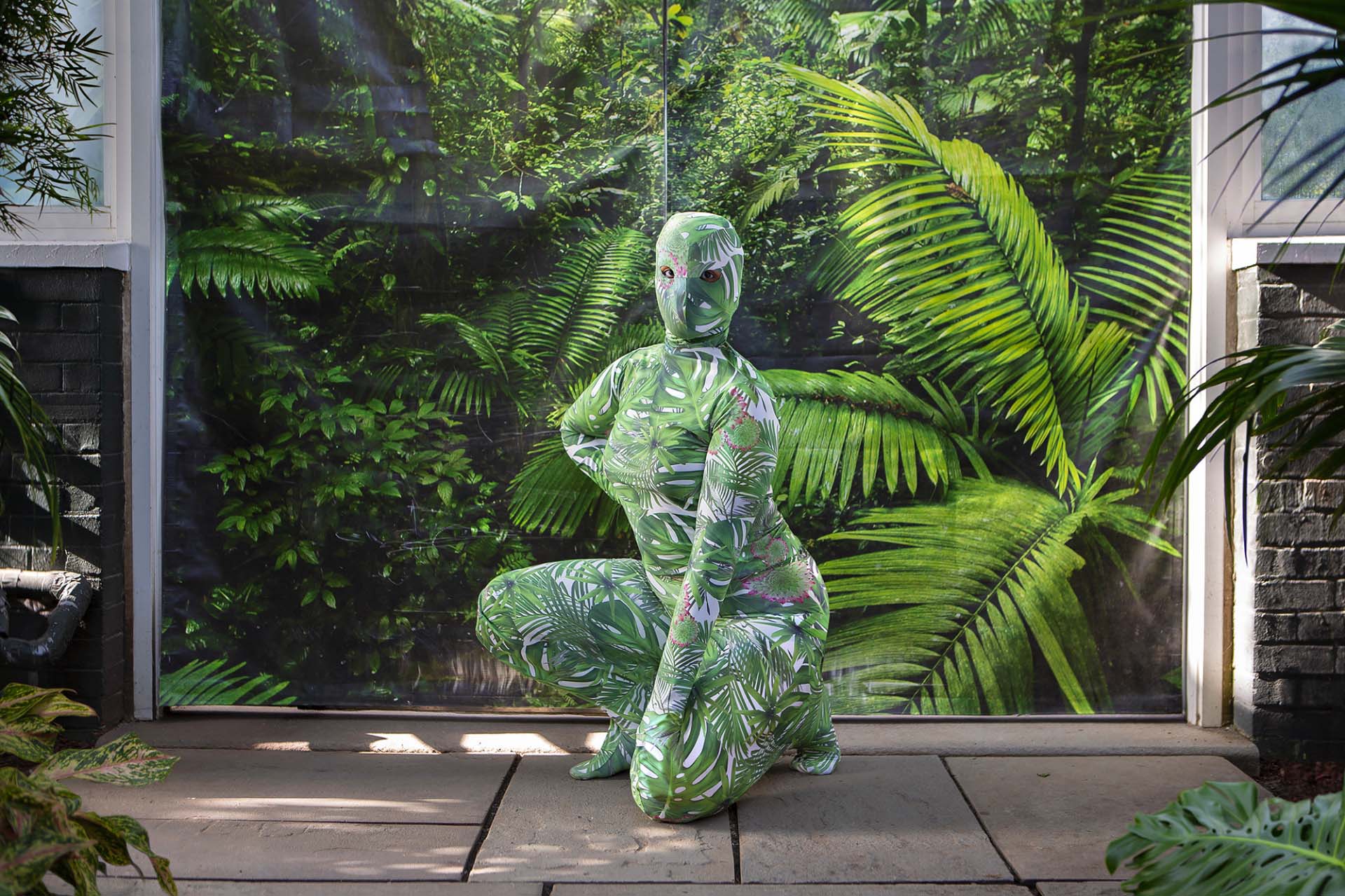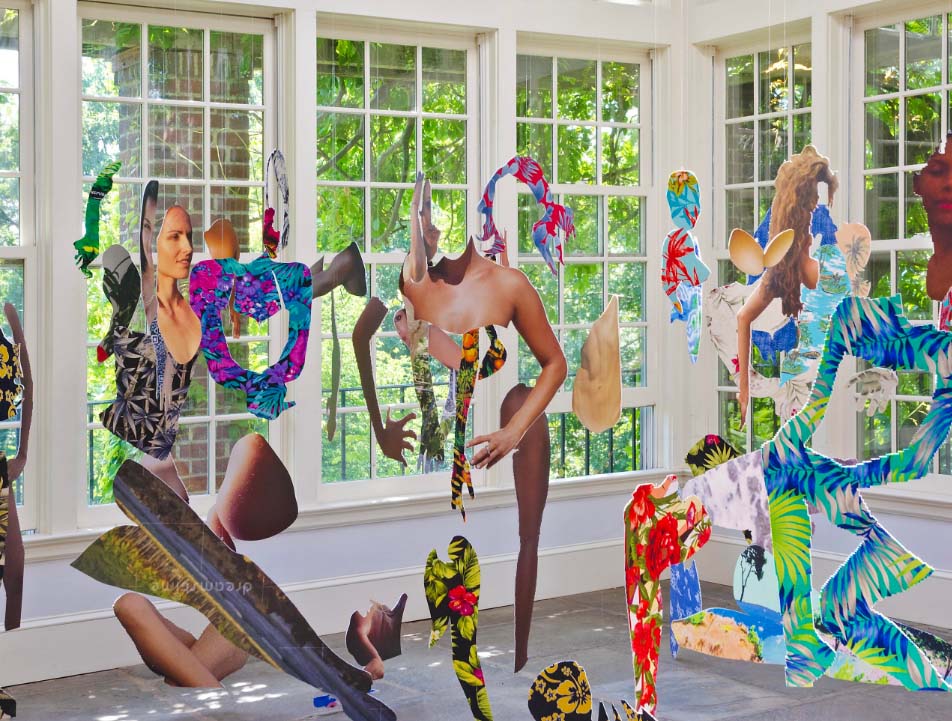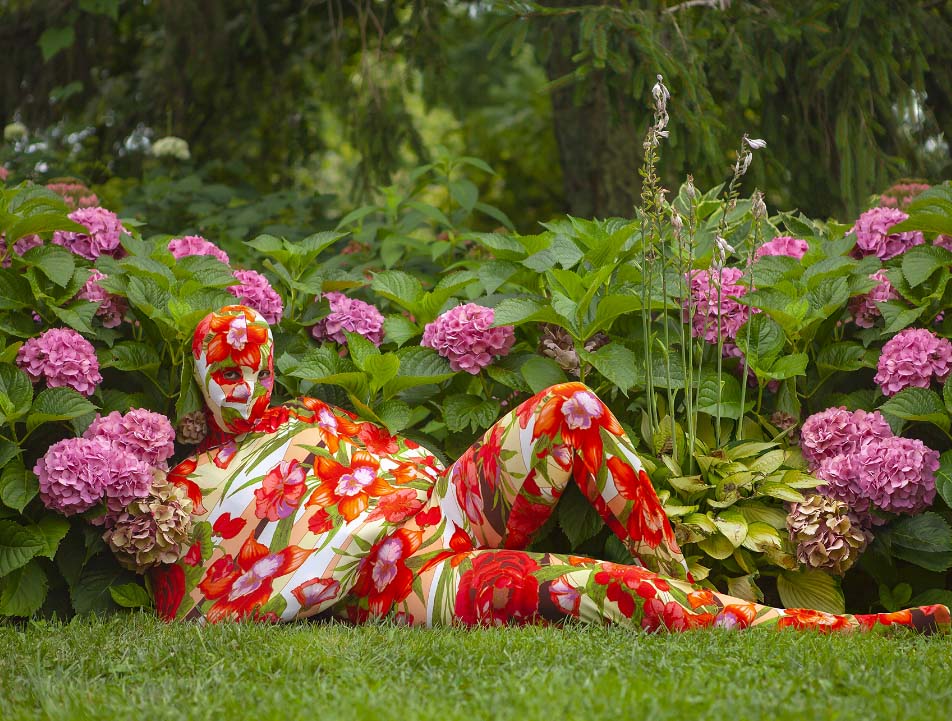Take, for example, The Cloaking (2019), a public art project commissioned by Fringe Projects Miami, for which Minaya covered statues of Ponce de Leon and Christopher Columbus in brightly patterned fabric of her own design. There’s something deeply funny about the sight of these two notorious conquistadors—each genocidal in their own right—sheathed completely in lush florals. Each grandiose statue and violent legacy reduced to sort of a blob on a Miami street, accented by awkward bulges. The irony turns prophetic when you consider the timing of Minaya’s project: mounted in December 2019, her artistic intervention was in some ways a bellwether of the monument toppling and defacement that would continue amid the uprisings of 2020.
In projects such as this one, Minaya wields the veneer of “tropical” beauty skillfully, with a full awareness of its ability to attract and disarm. Her art traffics in bright hues, verdant foliage, and coquettish fantasy, luring the viewer like a Venus fly trap. Yet rather than snap the jaws shut, Minaya’s objects and images invite you to squirm a little in your own complicity, instilling an awareness of the raced and gendered dynamics of consumption that underpin much of contemporary image production.
Ironically, Minaya didn’t start out trying to be funny, not with The Cloaking or many other projects, though she’s always admired the bite of stand-up. Humor is a strategy she’s come to embrace more recently. “It’s also [a way of] making the monuments more ridiculous. I feel humor can also work like beauty,” she explains, as we chat about the allure of each quality—the way they can provide appealing entry points to ideas that might otherwise feel daunting.
Minaya wields the veneer of tropical beauty skillfully, with a full awareness of its ability to attract and disarm.
Minaya’s work is certainly replete with visual pleasure. The aforementioned patterns, for example, feature hand-drawn castor plants, manchineel trees, and yaupon holly set against fern green and sky blue backgrounds. Each leaf rendered in lush color and detail. The artist has been designing her own fabrics for several years now, perhaps a natural consequence of a childhood spent surrounded by the brightly hued prints that line the aisles of her mother’s clothing store in Santo Domingo. Yet Minaya’s designs reflect an intentional pivot from the ubiquitous hibiscus flowers that have long been co-opted for the “tropical” patterns of souvenir shirts and fast fashion—a method of commodification that the artist sees as an extension of the legacy of colonialism. Heavily influenced by her ongoing research into ethnobotany, Minaya’s patterns feature what she terms “plants of resistance,” flora that are local or endemic to the Caribbean, with long histories of traditional or medicinal use by Indigenous and Afro-diasporic peoples.
Her performance-turned–photo series Containers (2015-2020) utilizes these patterns for satirical ends. In these images, Minaya and her collaborators don vibrant handmade bodysuits that contort the wearer into physically awkward or uncomfortable positions, their poses recalling the odalisques of art history or the ubiquitous crouch of your tia’s vacation photos on Facebook. Shot on beaches or amid lush foliage, each image mocks the fantasy that underpins those picture-perfect renderings of the tropics. Paradise to Minaya is always fake, a reflection of the “economic, political, and social relations of power that keep postcolonial countries and the Global South bound to the Global North,” as the Caribbean scholar Angelique V. Nixon writes. [1]



